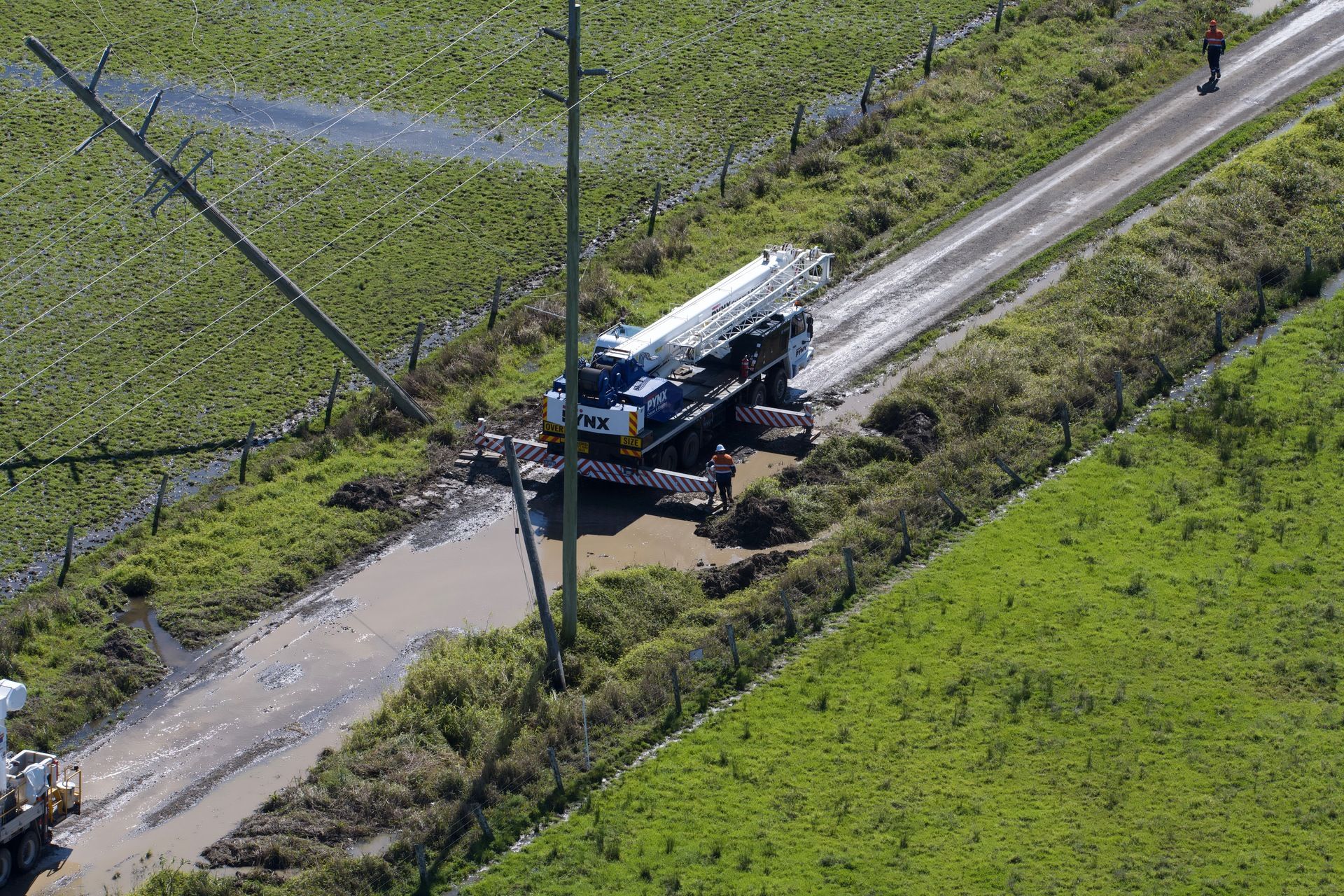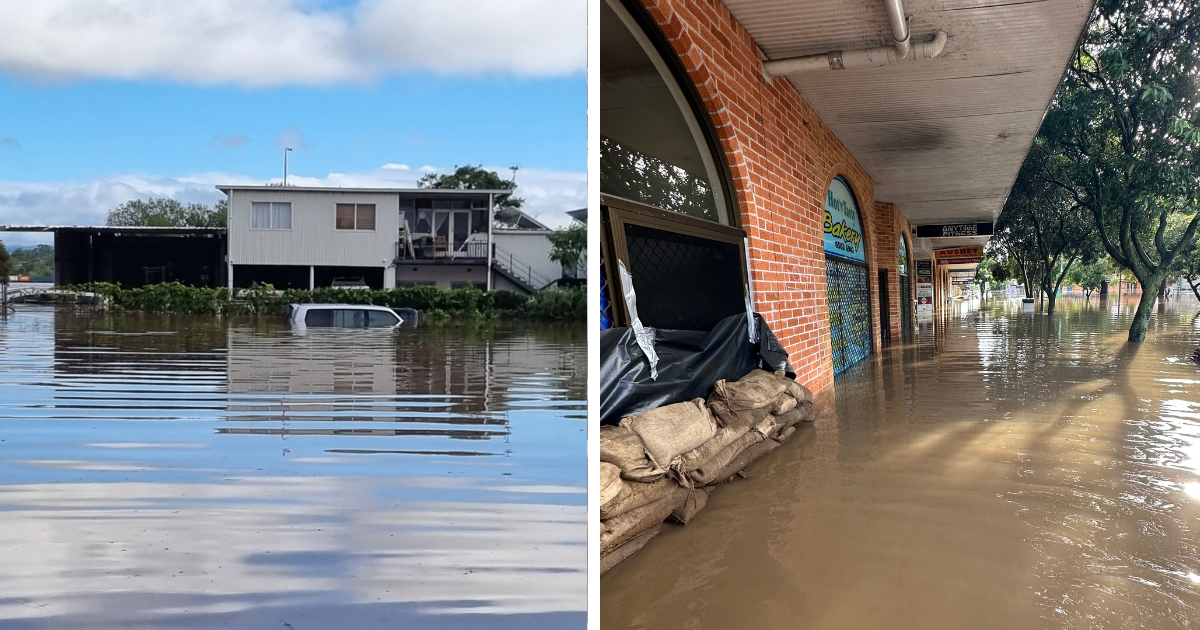Days without power for thousands on the MNC. How are we preparing for future severe weather?
With storms, bushfires, and flooding becoming more intense on the MNC, essential services are adapting to something experts say is the new norm.

The storm that swept through northern NSW on the first weekend of August left 32,000 homes and businesses without power for days. Fallen trees and power lines were buffeted by 100km/hr strong winds along the Mid North Coast and in New England, and the clean up following the damage has left many locals with the same question: what more can we do to prepare?
Just this year, the Mid North Coast has been impacted by ex-tropical cyclone Alfred in March and record-breaking floods in May. Scientists say severe weather events like these are becoming more frequent and more destructive due to global temperatures rising. With little time to recover in between disasters, preparedness and resilience is becoming more important.
With severe weather events increasing in frequency and intensity, extended power outages are expected to become more common in the region. So what else can be done? The Mid North Coaster reached out to the NSW government and Essential Energy to find out what it was doing to prepare for future storms, floods and bushfires.

Essential Energy crews responding to the extensive storm damage on the Mid North Coast. Picture supplied Essential Energy.
Unpacking the Mid North Coast’s power network
Essential Energy’s network predominantly consists of large spans of overhead powerlines, covering 737,000 square kilometres of regional, rural and remote New South Wales.
A spokesperson for Essential Energy told the Mid North Coaster severe storms can disrupt power regardless of how the electricity is generated.
During major weather events, poles, crossarms, conductors and wires can also be damaged, often across multiple sites. Outages may last for several days depending on the extent of the damage and access to faults.

Power pole down during August storm. Picture Essential Energy Facebook page.
Preparation and resilient power poles
While the community can keep an eye on weather apps, secure loose items, trim trees, charge phones, and have battery-powered lights to better prepare for severe weather and potential power outages, a deeper level of preparation regarding the network is required.
“New South Wales and southern Queensland, particularly along the east coast, have experienced a growing number of extreme weather events in recent years,” said a spokesperson for Essential Energy.
“It’s important to emphasise that being prepared is key.”
Essential Energy is investing in infrastructure and technology that is designed to better withstand extreme weather and support faster restoration when outages occur.
One key initiative is the installation of composite poles, which offer greater durability in fires, floods and storms. Composite poles are made of Fibre Reinforced Polymer, and developed in partnership with Wagners Composite Fibre Technologies.
“Unlike traditional timber poles, these poles are non-conductive, fire resistant, immune to termite damage and decay, and lightweight, making them safer and faster to transport and install in difficult to access locations,” said the spokesperson.
Essential Energy is also rolling out stand-alone power systems (SAPS) to keep remote customers powered during emergencies, and building microgrids that can support communities when the connection to the main network is down.
“We know that extreme weather will continue to challenge our communities and infrastructure, but by staying prepared and investing in smarter, stronger systems we can reduce the impact and recover faster.”
Extensive damage leads to days without power
In 2025, the severity of multiple weather events in the region has resulted in tens of thousands being without power for days at a time. The extent of the damage and limited access caused by the storms and floods causes this delay, as Essential Energy crews work to cover the whole region.
In early March, damage from ex-tropical cyclone Alfred resulted in around 42,600 properties experiencing outages at its peak.
During the recent record-breaking floods in May, more than 46,000 properties were affected by power outages across the Mid North Coast and Hunter regions. Homes and businesses remained without power for up to two weeks.
And following the storms that hit northern NSW earlier this month, more than 32,000 homes and businesses across the storm-impacted regions experienced power outages. The last customers to have power reinstated were reconnected six days later.
With severe weather events getting worse, preparing to live without power for days is becoming a necessity for those living on the Mid North Coast. It’s not a matter of if – but when.
➡️ Visit the SES website, sesemergencyplan.com.au for more information about creating an emergency plan.
➡️ Call Essential Energy immediately on 13 20 80 if you see damaged powerlines or power poles.
➡️ For more detailed advice, visit the Essential Energy’s storm safety page, flood safety page, and fire safety page.
Thumbnail: Tree falls on powerlines during the August storm on the Mid North Coast . Picture: Essential Energy Facebook page.

